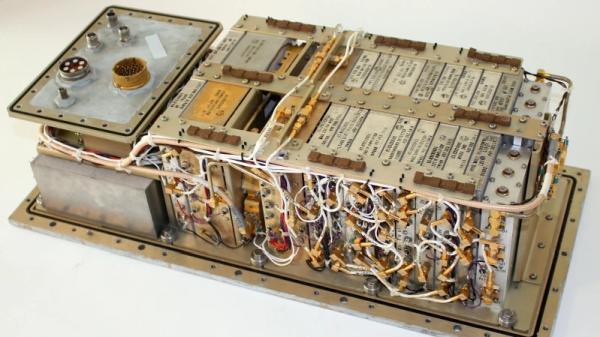If you haven’t seen [Ken Shirriff]’s teardowns and reverse engineering expeditions, then you’re in for a treat. His explanation and demonstration of the Apollo digital ranging system is a fascinating read, even if vintage computing and engineering aren’t part of your normal fare.

The average Hackaday reader should be familiar with the concept of determining the distance of a faraway object by measuring how long it takes a sound or radio wave to be reflected, such as in sonar and radar. Going another step and measuring Doppler Shift – the difference in the returned signal’s frequency – will tell us the velocity of the object relative to our position. It’s so simple that an Arduino can do it. But in the days of Apollo, there was no Arduino. In fact, there were no Integrated Circuits. And Apollo missions went all the way to the moon- far too distant for relatively simple Radar measurements.
How could range (distance), position, and speed then be measured? The answer is one that [Ken] aptly describes as fractal: Each layer of complexity hides beneath it another layer of complexity. Using equations dating from 3rd century China as well as cutting edge weak signal telemetry, Apollo engineers devised a complex but workable system that used an S-Band transponder to take data transmitted from a powerful ground station and send it back on another frequency. One great hack was to use Phase Modulation to encode the downlink instead of Frequency Modulation so that Doppler data gained on the uplink wouldn’t be lost on the downlink.
By knowing the precise position of the ground station and the very large parabolic antennae, not only could the distance and speed be measured, but a good estimation of the spacecraft’s position in 3d space could also be had.
From the use of delay line memory to aggregate weak signals to a state machine computer made up of discrete transistor logic, all the way to the cutting edge transponder on the Command Module, the Apollo digital ranging system is an excellent example of great hacks coming out of a program with tight technical constraints.
We highly recommend giving [Ken]’s blog a read and be sure to check out the interactive demonstration web pages he’s put up to help us grasp the genius of the Apollo engineering teams. [Ken]’s been featured on Hackaday a number of times reverse engineering such diverse things as a Yamaha DX7 Synth chip.
Source: THE APOLLO DIGITAL RANGING SYSTEM: MORE THAN MEETS THE EYE
